Last Updated on August 26, 2022 by
Did you know that with more than 8,000 stations across the country and about 121,000 km of rail routes the Indian Rail Network is the fourth extensive rail system in the world? It’s not your fault if after opening the Indian Railways page for the first time, you had a terrible headache and preferred to opt for a bumpy car ride on one of the Indian dusty roads. This guide will help you to understand the Indian railways step by step! Let’s start!
Table of Contents
Indian railways step by step
Like everything in India, also the Railways website is messy, overwritten and with scammer bans behind the corner. Last year, I was exactly in your position and when I was planning my trip from New Delhi to Agra I had in front of me two choices: booking a ride with a private taxi costing no less than £60-80 for two people or learning how to book a, way much cheaper, train ticket from abroad. Once you get how the system works, it is not difficult, but it definitely try your patience.
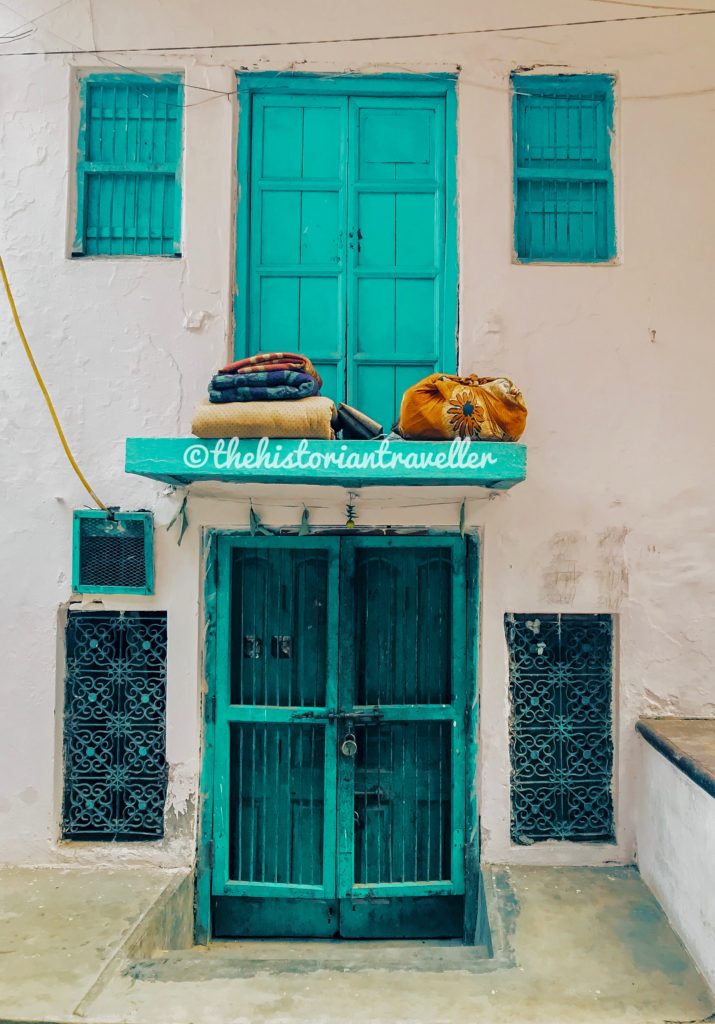
Why I have to travel by train in India?
Lonely Planet states that ” Travelling on an Indian train is a reason to travel all by itself “. This cannot be truer because travelling by train in India can be considered an essential way of experiencing Indian culture. Millions of Indians travel by train every day. In fact, the railway system covers almost the whole country and despite chaotic, it is more reliable than what it appears from a distorted western perspective. There are two basic misconceptions about travel in India by train. The first is that all Indian looks like the one in the photo below…
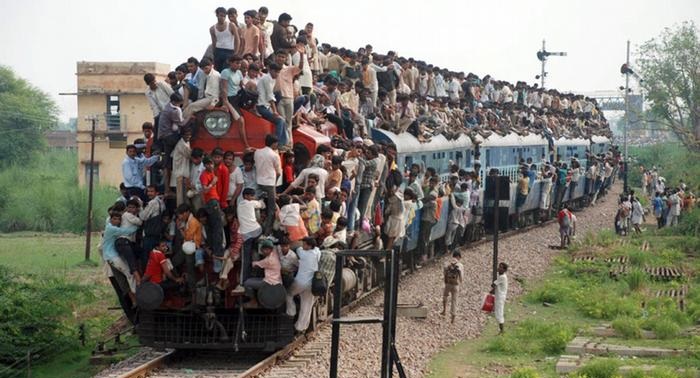
I still have friends who are convinced I was actually travelling sat on the roof of an Indian train. They simply can’t believe that I never seen anything like this in India, even in the smallest place I visited. The second misconception is that trains in India are unsafe because of Indian people travelling with you.
Reasons why to travel by train in India
FALSE! Indian trains are generally safe, most of the people travelling with you are trying to go to work/reach their families, and their intention is not to harm tourists in any way. It’s true also that if you are travelling in the lower classes (especially at night), I would not recommend leaving your luggage alone (but I would not leave my luggage alone in any other train in the world). Keeping in mind this, there are definitively more advantages than disadvantages in travelling by train.
It’s safe, cheap and relaxing
Firstly, because it’s cheaper than going with a taxi. A first class ticket from Delhi to Agra will not cost you more than £20. A reliable pre-paid cab will cost you £60-80. There are other much cheaper cabs to hire locally, but their reliability is not granted and if you are a first time visitor, I would not recommend them. Secondly, it’s FASTER! A journey by car that would take 4/5 hours may take 2 travelling by train! This will reduce greatly your travelling time and allows you more hours to spend in sightseeing! Third, it’s way more relaxing than travelling by car. India is chaotic and the continuous horning of every single vehicle on the road it’s much more than a necessity for Indian people, it’s a cultural life-style. If for locals and well-travelled tourist, this is OK.
Most of people visiting for the first time India find it unbearable. Imagine travelling by car for 6/7 hours accompanied by that continuous horning! And believe me, this doesn’t stop even in the motorway. Train travelling can give you a little bit of a rest far from the overwhelming Indian chaos and you will be grateful for that after a long journey. Lastly, it’s SAFER! The Indian road safety report of 2018 states than more than ONE MILLION people were killed in car accidents last year.
To be honest, after having seen people driving in the wrong direction in the Indian motorway and seen my driver watching a TV series while driving me and Alessio from Mumbai to Pune, this is not a surprise. In my twenty days in India, I’ve been involved in one minor crash in Jaipur and it was totally fault of my driver. Don’t get me wrong, it’s ok to travel by taxi for short distances but if you have to move between distant cities, train travelling is the safest way. In the end, is better safe than sorry!
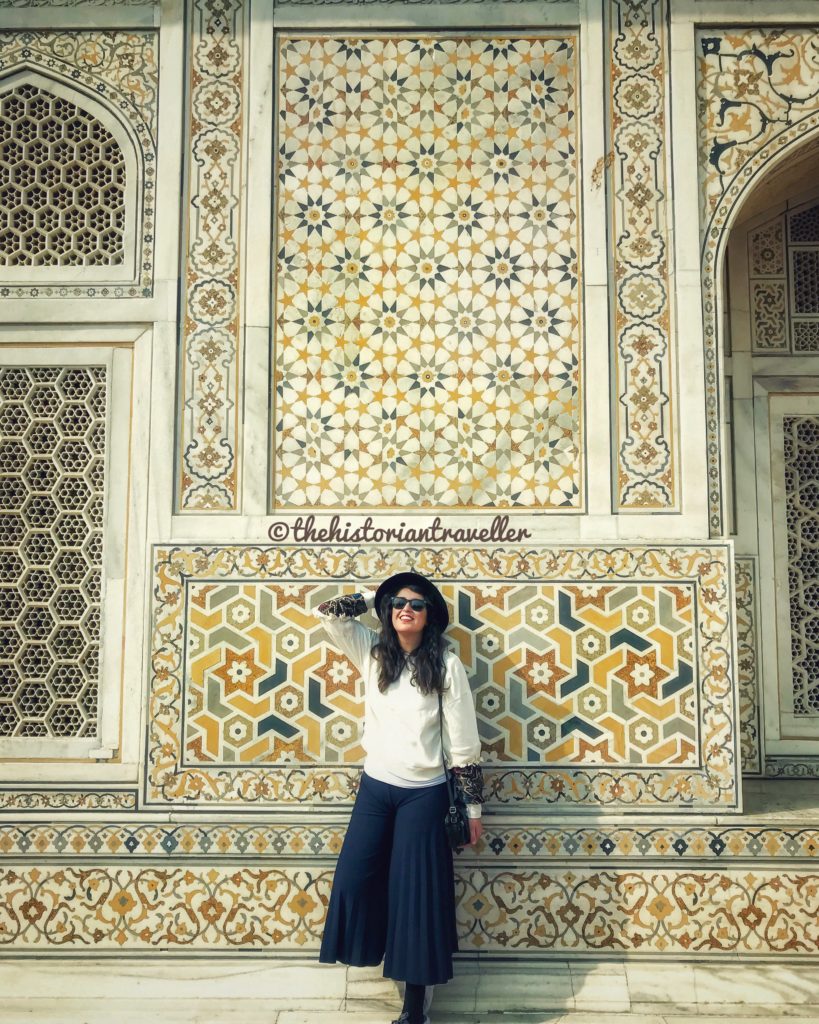
Train classes and type of trains
Train classes in India are much more complex than westerners train ones, which generally distinguish between first and economy class. In fact, there are 8 classes on Indian trains of which price is accorded to the quality of the service you will receive on board and the type of coach/seat you choose. When booking your class, this will appear with the two/three acronyms and numbers e.g. AC1/AC2 etc. To know the meaning of these acronyms, read below!
Train classes on Indian trains
- AC Executive chair class (EC) This type of class is not present on every train but you can find it on high speed trains like the Shatabdi Express. Executives and tourists commonly use this. For this reason, booking in advance is very recommended. Food served on board of the train is included in the price and you have the possibility to choose between meat and vegetarian dishes.
- AC Chair class (CC) Similar to the AC EC, the AC CC class can be found in high-speed trains and has comfortable seats in a air conditioned coach. However, food is not included.
- FC First Class First Class no longer exists in Indian trains, replaced mostly by AC1 coaches. However, if you find the abbreviation FC this means that you will get a first class ticket in a non-air-conditioned coach.
- Sleeper Class (SL) Sleeper Class can be found in trains covering long distances. There is no air conditioning but ventilation is granted by fans and windows open. Mattress are quite rough so it is suggested to bring a sleeper bag.
- Air-conditioned first class (AC1 or 1A) This is usually found in trains covering long distances and used by Indian businessmen. It is considered a comfortable class for travelling and seats are organised in 2 and 4 berths and sleeper section.
- Air-conditioned 2-tier (AC2 or 2A) This class is a cheaper version of the AC1. It is still considered a comfortable way of travelling and used mostly by families. You can use berths also as sleeper bunks for longer distances. These are provided with curtains for having a bit of privacy. Two tier indicates the number of bunks for each section of the row.
- Air-conditioned 3-tier (AC3 or 3A) Is more crowded than AC2 because each bay has 3 tiers (up, lower and middle). Curtains are not provided to grant you privacy but tickets are cheaper.
- 2nd class seats (2S) Coaches are here divided in reserved and not reserved sections. These are generally more crowded than other classes is not recommended for longer journeys because seats are not padded and generally made of wood or plastic.
Type of Trains in India
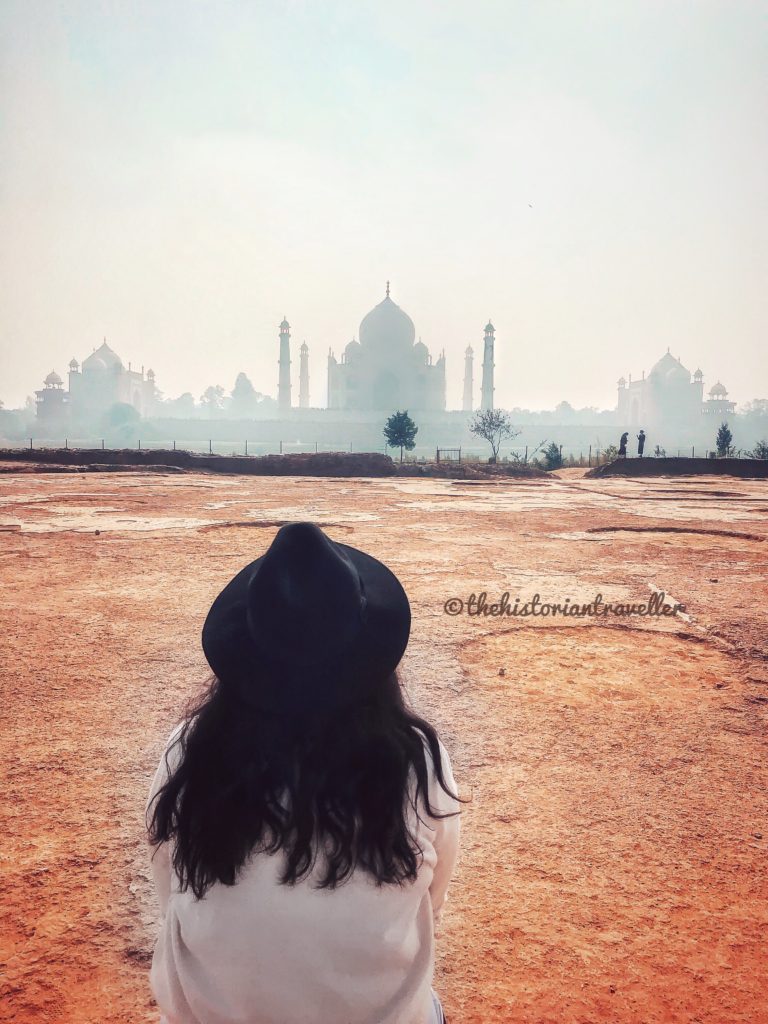
Because there are more than 20 different types of trains in India but it’s likely you wont use 90% of those, listed below you will find only the ones you are more likely to book during your journey to across India.
- Tejas Express It has been introduced just two years ago and it’s the most similar to our western trains you will find in India. It’s a semi high speed full AC train featuring braille displays, LED TV for each passenger with phone sockets, WiFi and food services. Tickets are about 30% more expensive than the Shatabati fares and at the moment the train covers only the following routes:
– Mumbai CST – Karmali Tejas Express
– New Delhi – Chandigarh Tejas Express
An extention of the route in Chennai and Lucknow is planned for the upcoming years.
- Shatabdi Express is one of the most famous train lines in India and it is usually make a day round trip. Tourists use mostly this route (and this is the one I used as well). This is the Bhopal Shatabdi Express (train number 12001/12002) going from New Delhi to Agra in just two hours. The train is quite fast (the second faster in India) and the first class is comfy and safe. Not comparable to our first classes but I would say a good economy on our trains.
- Rajdhani Express are those trains that connect the Indian main capital to the minor state capitals (E.g. Mumbai-New Delhi). They are air conditioned and considered the most fast trains in India.
- Duronto Express are a category of non-stop long distance trains connecting India’s major state capitals. They are very fast and stop only for technical checks. A most known one is the 12239/12240 Jaipur Duronto Express.
- Suburban rail and Metro connect cites central business districts to their suburbs. You can find these in major cities like New Delhi, Kolkata or Mumbai. They usually stop at every station, and have unreserved seating.
- Mountain railways if you are looking for more adventure and a breathtaking scenery, these trains are the most popular ones and considered a UNESCO World Heritage Site. Among the most popular ones there is the Darjeeling Himalayan Railway running between
between Siliguri and Darjeeling at the highest elevation of 2,300 mt. - Luxury trains there is a variety of luxury trains in India designed exclusively for tourists. These follow itineraries of 7/10 days and include accommodation, tours, food and sometimes even a on board spa! They are usually quite expensive and price ranges from US$ 4,550 to US$ 6,930 for two people. The most known ones are Palace on Wheels, the Deccan Odissey and the Maharajas’ Express. I haven’t personally tried any of these luxury trains but would love to experience them once!
Finding the right timetable for your trip
Giving the high number of trains, the timetable may look quite confusing. A good system to find your train timetable and your platform at the station is to remember the name, number and route of the train. Example, if you are going to Mumbai you have to look for the number 12952 route NEW DELHI – MUMBAI CENTRAL and type of train Rajdhani Express. Online, you can check your timetable in these two different websites: Indian Rail, by searching your destination and date. This will show you different trains and times, to check yours you can search it by number or type of train. You will also have a preview of the classes that you can book on a later moment.
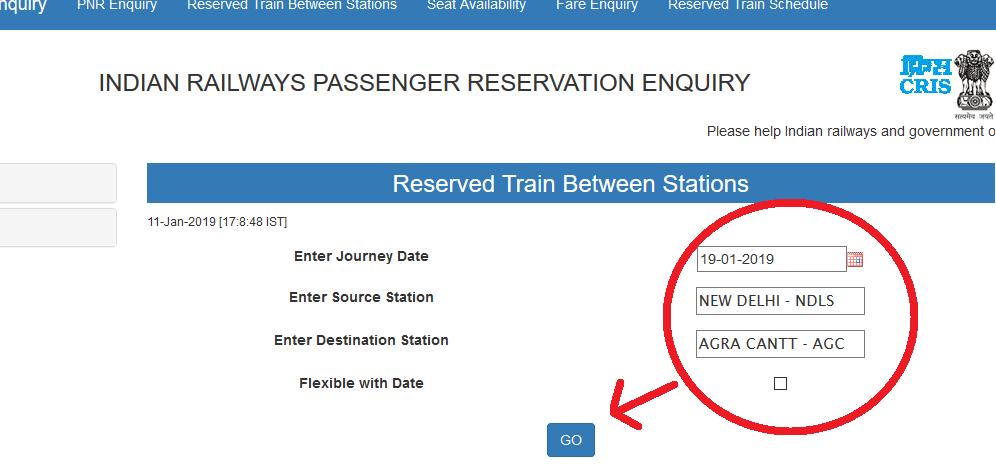
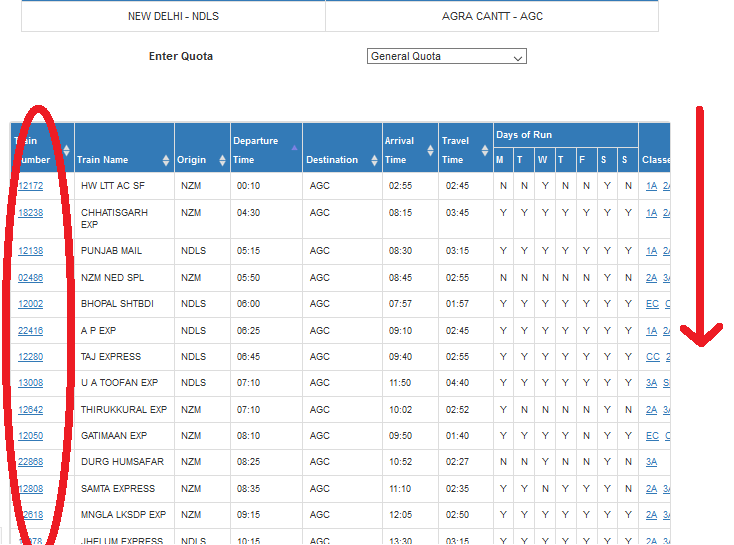
Maps of India provides a reliable train time table according to the type of train. If you click on the number of the train, this will show you all the stops the train will make with the expected time of arrival/departure till destination.
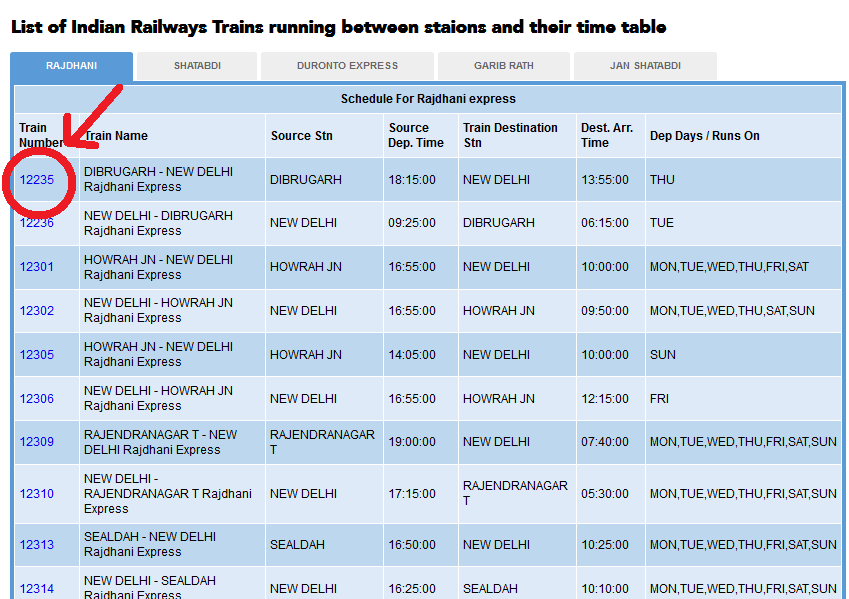
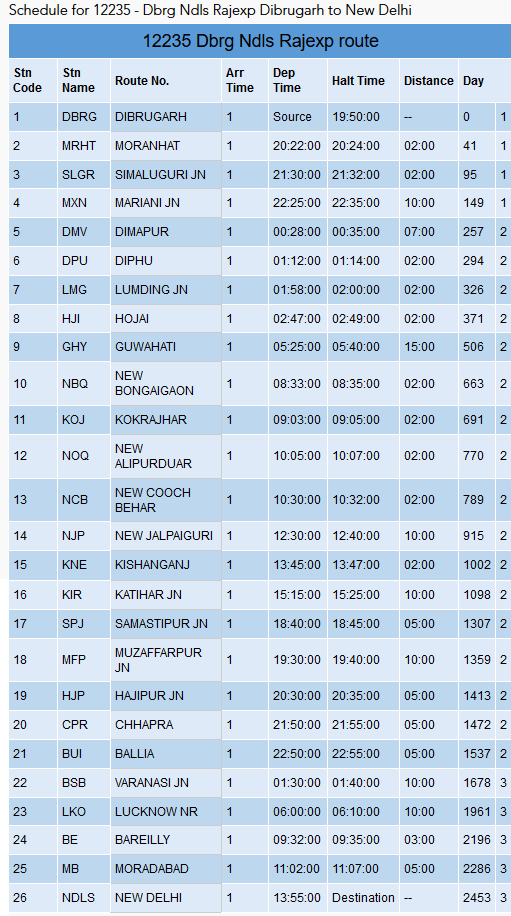
Where/when/how do I have to book my tickets?
Before proceeding to book your train tickets, let me explain you what different types of ticket you may find while booking. As for the train classes, also the ticket types are listed per acronyms.
Type of Tickets on Indian Trains
- CNF means “confirmed” this means that you made it and your seat has been reserved!
- RAC means “reservation against cancellation”. This type of ticket activates when all the reservable seats on the train are fully booked. The system will put you automatically in a Waiting List (WL) and you can still travel with that train but if you don’t get any reservation, you have to search for an unreserved seat. If someone cancels his booking you might be promoted to CNF and get a seat on a specific coach. If the waiting list is very long and you are not accommodated a place your ticket will be refunded.
- Tatkal (CK) means “Immediate” these are generally last-minute tickets for emergency departures. These tickets can’t be cancelled or refunded.
- Tourist Quota Tickets some trains (generally the most popular routes) reserve some tickets to tourists. They are usually sold very fast and it is advisable to book them well in advance. I personally used the tourist quota tickets and booked my train ride about three months in advance.
When to book a ticket for a train trip in India
Now that you know how distinguish the type of tickets, it’s time to book! If you follow these steps one by one you can make it! First one-million-dollars problem. When do I have to book my train tickets? During high season (Nov-Mar) tickets on EC and AC1 sell fast. If you want to travel on a reserved seat on one of those coaches, my advice is to book as soon as you know your itinerary. Otherwise you may be disappointed. Generally, you can book tickets up to 120 days in advance.
Where to book train tickets in India
Where do I have to book my tickets? Essentially, there are three ways to book your tickets. Via a travel agent (who will ask you for a commission), in person and online.
- In person. If you are on the go and want to buy a ticket directly at the station check www.indianrail.gov.in for a list of International Tourist Bureaux selling tickets to foreign visitors at the station. These are generally based in big cities like Agra, Delhi or Mumbai but there are possibly other offices around India. Be sure to get to the right office and don’t listen to anyone telling you it’s closed (they are scammers! we will talk about this below). At the counter they will ask for your Visa and Passport. Don’t forget to prepare them! Furthermore, you can only pay in cash! Some offices accept also foreign currencies like Sterling or Dollar but do research prior to bring other type of money.
- Online booking. You can book your tickets via three different websites. These are Indian Railways, Clear Trip and Make my Trip. I have personally booked my tickets via the Indian Railways website because Make my Trip was asking me an indian telephone number to confirm my booking and at the time I did not have it! In any case, to use Make my Trip you have to register your details with the IRCT (indian railways), and it is much more straightforward to book the tickets with them!
How to book India train tickets online
If you follow the steps below, booking your online train ticket with IRCT (Indian Railways) will be very easy!
First Step – Registration
Go to the IRCT webpage. This will look like the picture below. Before booking your tickets, you will need to register your details on the “Register” page. Here you will be asked many questions to confirm your identity.
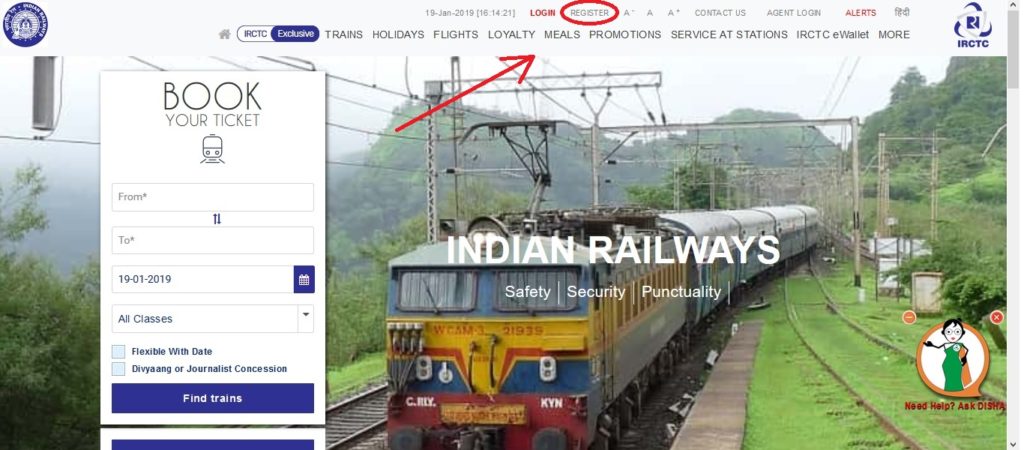
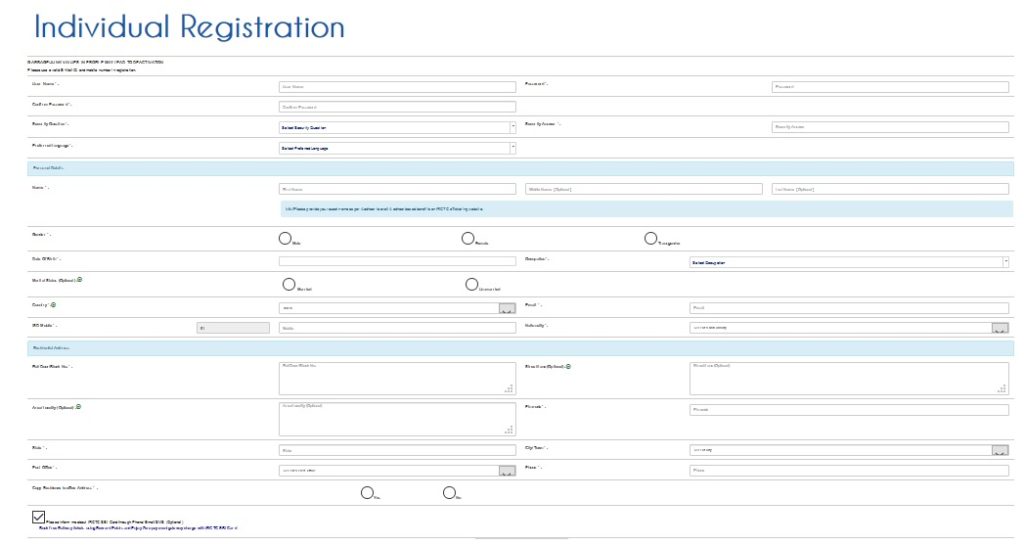
Be patient at this stage of registration. I had some troubles while registering my details and I had to fill the page at least three times but in the end, it did work! Once you completed your registration, you will receive an email with your login details like the one below. This will tell you to login and inform you that for international users there is a registration fee to pay that will confirm your email and mobile number.
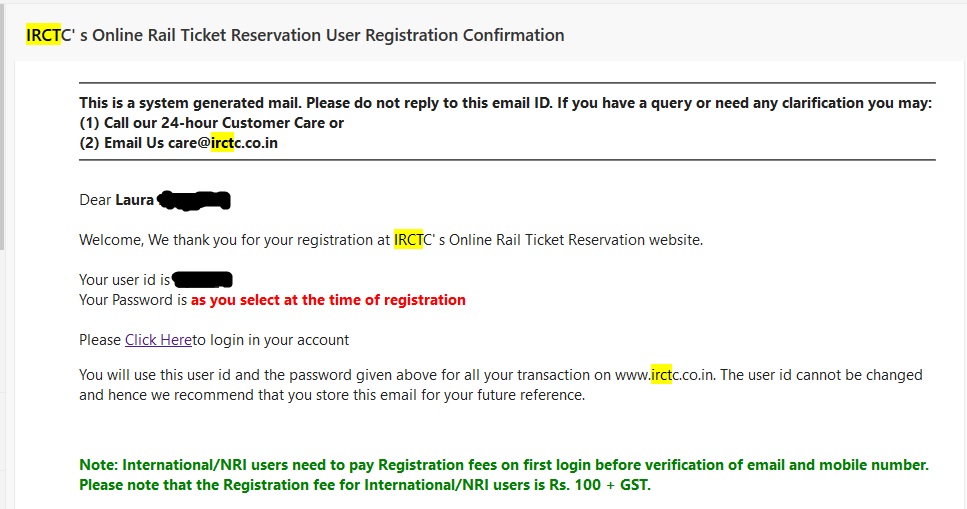
Second step – Verify your number and email.
Login with your details via the email you received. The website will ask you now to verify your mobile phone and email. The verification of your mobile phone comes via the OTP (One time password) and the payment of a small fee (Rs. 100 + GST. / £1,50 circa). You will receive the OTP via sms on the phone and have to insert a 6 digit number in the space suggested on the IRCT page.

Once you have done with the mobile phone and the fee payment, the website will ask you to verify your email with the same method. You will receive an OTP password in your email and you have to insert the six-digit number in the space provided.
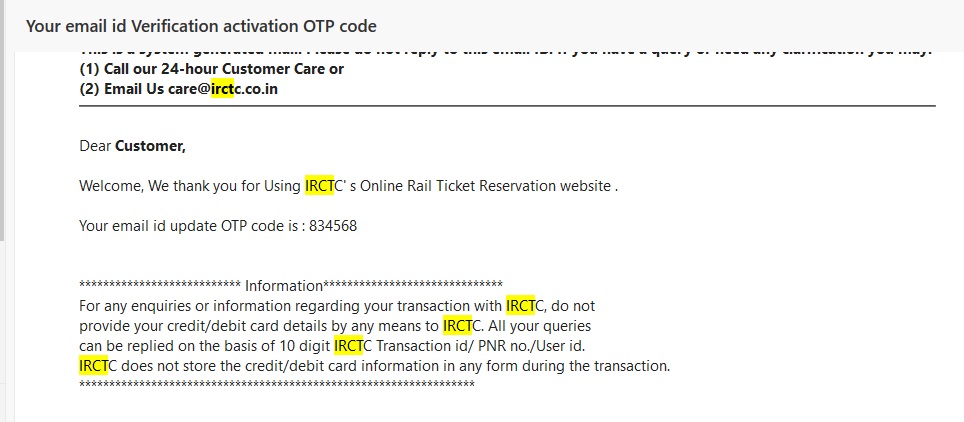
Once you insert your OTP on the box you’re done! Congratulation, you are now fully registered on the Indian Railway system and able to book your tickets online! Eureka!
Third step – Book your tickets
Now that you have everything all set up, it’s time to book your journey! First, you have to login into your account. The system is a bit annoying because every time you login it asks you for a OTP or a screen temporary password. Don’t get mad if you can’t login the first time, it’s the system not you!
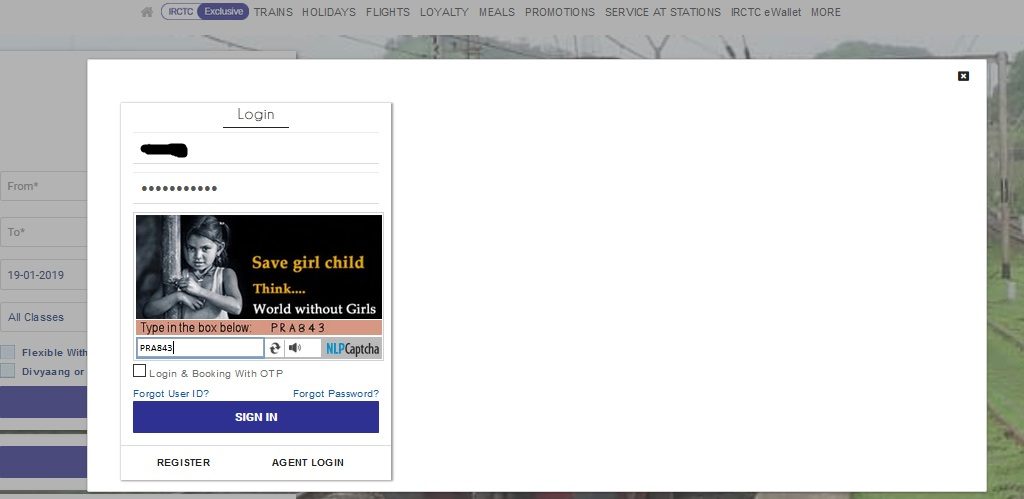
Once you have completed your login, you will see again the initial screen that needs to be filled with your travel request. Search for your destination and date (you can eventually choose your class if you already know it, otherwise you can choose it later). As example for you, I choose a hypothetical New Delhi-Agra trip (which I actually tried by the way!). Once you choose your destination, you will see the screen (pictured below) giving you the following main information: type of class and train you can choose to display on your selection (black box), type of train you can book (red box) and what class is available (yellow box), duration of the journey (blue circle) and type of travel with departure and arrival time (e.g. morning train 6.10-8.10 as shown on grey box).
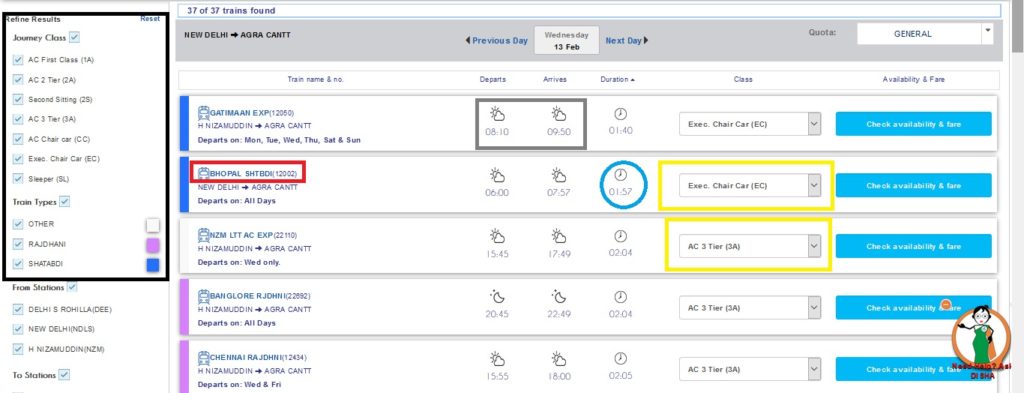
If you want to check the price of your train, click the blue box on the right and you will see more details about the train selected. Don’t panic when you see what looks like a huge amount of rupees for a ticket. This price converted into your local currency is actually very cheap. For example, 1,000 Rs. are about £11/15$.

If you are happy with the price, class and train for your destination you can proceed to the booking by clicking the box “book now” on the available time and date. This will lead you to the main booking page consisting of three main steps. On the first one, you have to insert your (and all your companions) ID details and choose what type of dish you prefer (if this is included in your ticket). If you are not Indian, you must provide your passport number. On the right of your screen you will continue to see the main details of your train ride.
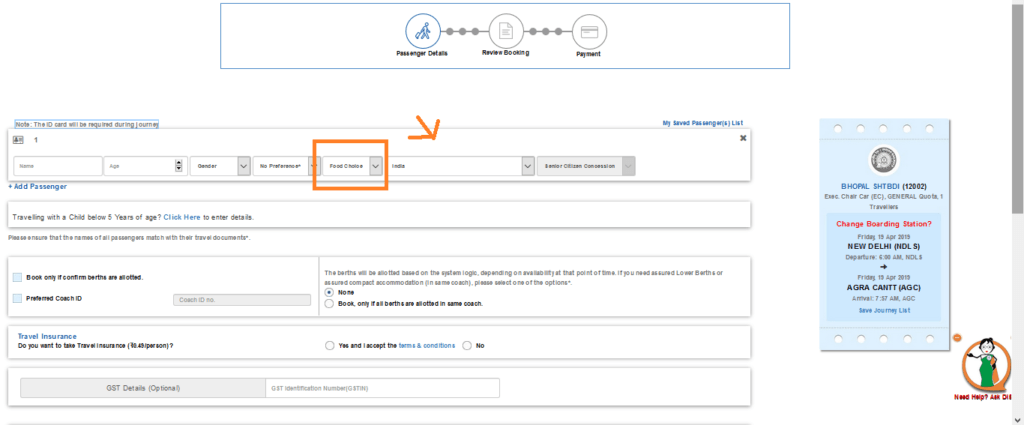
Once you have inserted all your details you will be directed to the second step, which is checking that everything you inserted is correct. At this stage of the booking, you can still amend your information if you made any mistake.
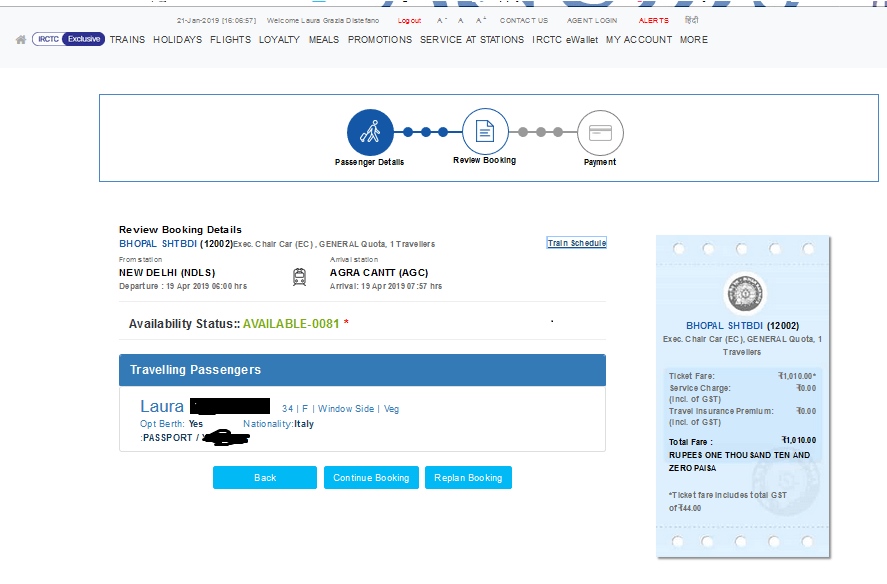
Fourth step – Payment
If you are happy with your selection and details, you can proceed to the last step, which is payment! On the payment page, you will find many options that might create confusion if you are a tourist because the payment page is not properly tourist-friendly. Indeed, the Indian Railways accept different methods of payment but the only one YOU can use as a tourist is the one under the category “international cards” this option is hidden under the voice MULTIPLE PAYMENT SERVICE. Ignore all the other options because in the end they accept only Indian debit/credit cards. So, click “multiple payment service” and then INTERNATIONAL CARDS (powered by Atom).
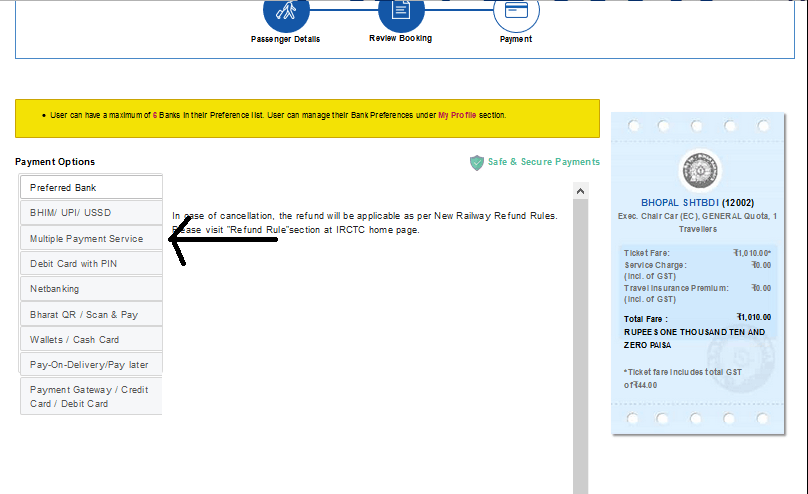
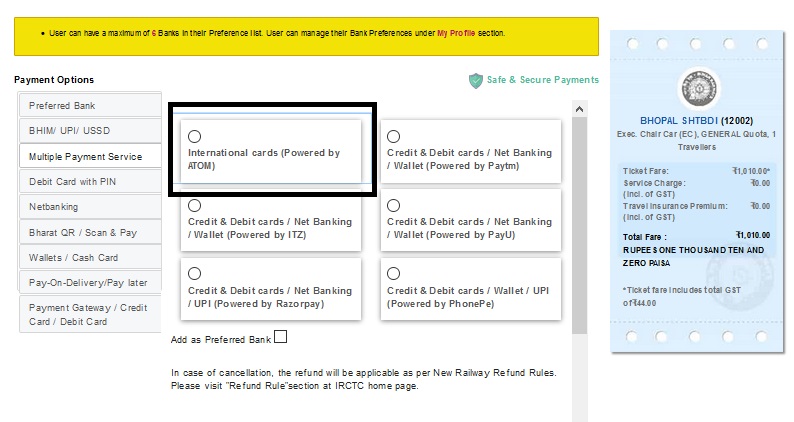
I haven’t tried the other five options in addition to International cards, so I can’t guarantee they work well. Once you will click the Int. card option you will be directed in the actual payment page where you have to insert your credit card details. You can choose to pay in rupees or in your own currency (this option depends on the card you are using) and the process is quick and simple!
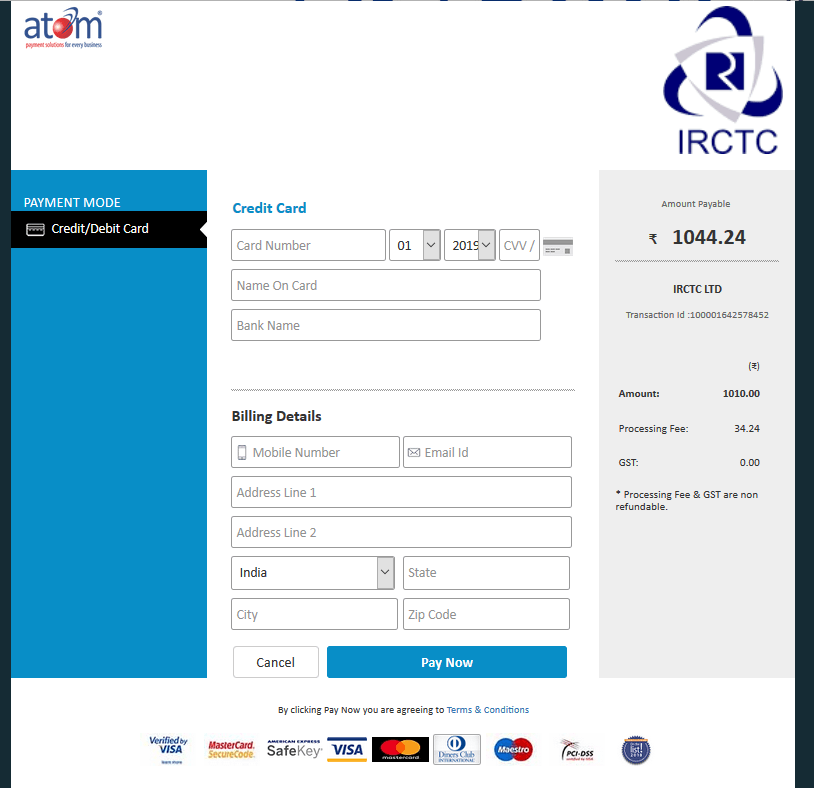
Congratulation!!! You’ve made it!! You are officially booked on an Indian train journey! At this point, check your email because you should have received your e-ticket that should look more or less like mine below! Don’t forget to print it out and keep it with you during your journey!
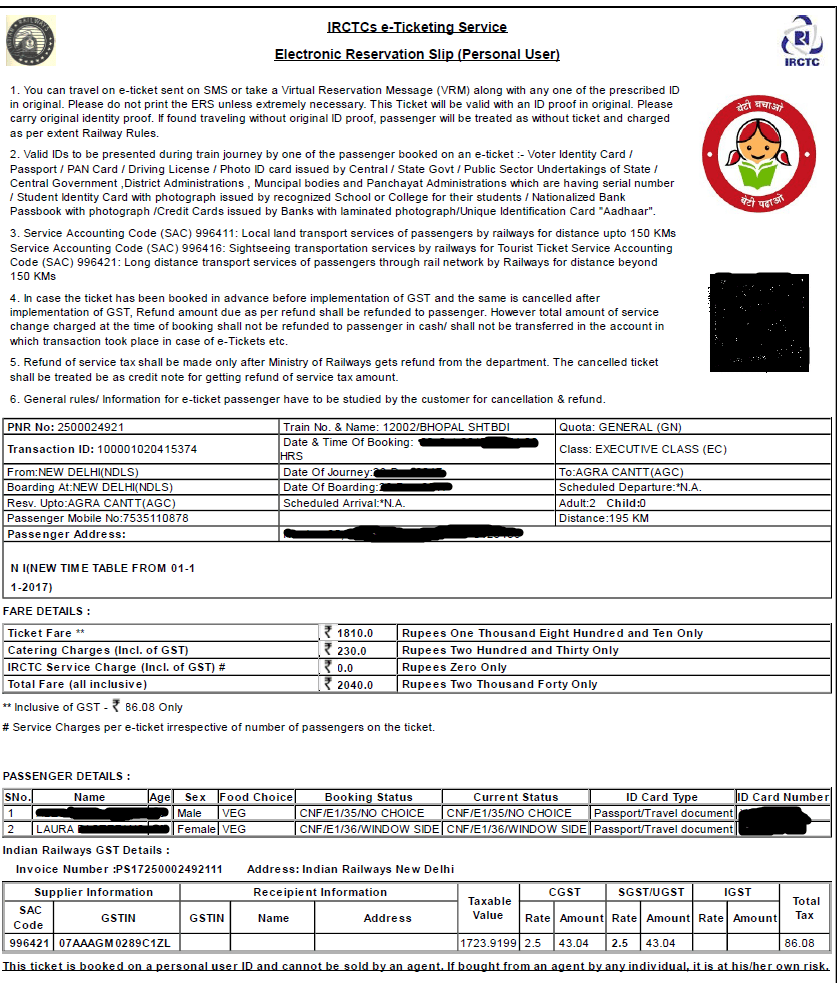
Fifth step – At the station, boarding the train
It’s time to depart! Check carefully all the information about your train on the ticket especially about your place/berth/coach. If you are travelling on a long-distance train, your name will be printed out on a list placed out at the train station ticket office (2h before) and on the outside of the train before departure. Here you will find the confirmation of your name and coach (eg. Name- AC1 coach 2 seat/berth etc.).
Actually, I discovered that this system is in use also on short-distance trains. In fact, on the morning of our departure, I found Alessio name and mine on the door of our coach. You must take your ticket and passport with you. A few minutes after departure, an inspector will check that all the details on your passport correspond to his own list (similar to the one published outside the train). Now you can relax and enjoy your journey!
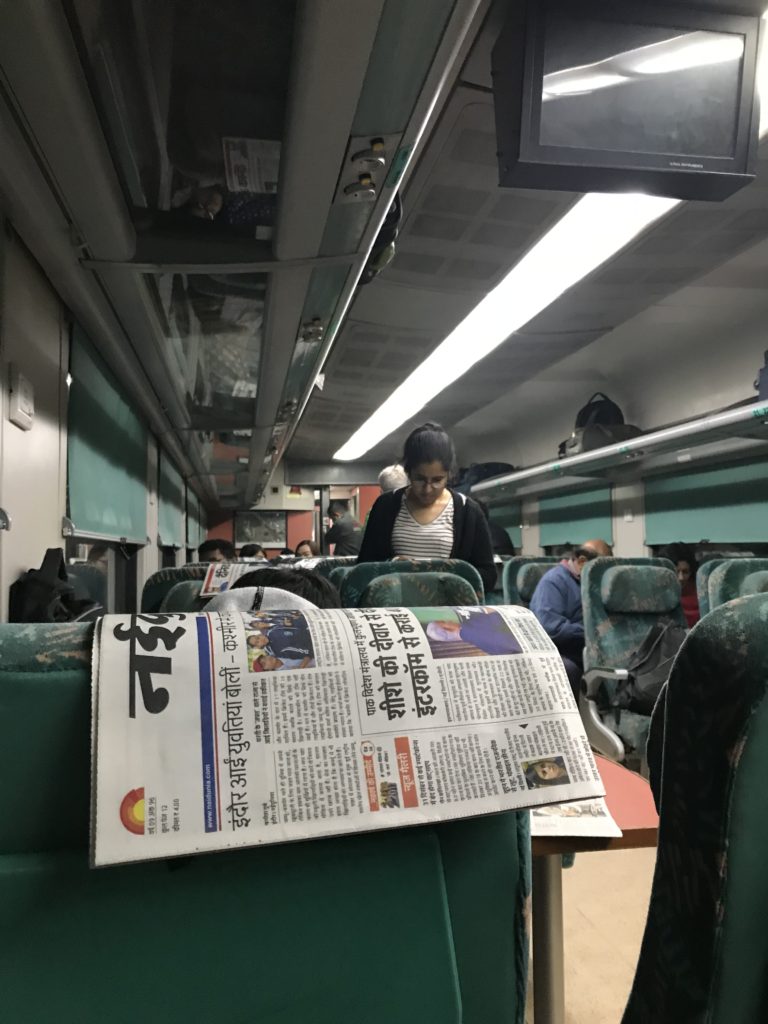
I have to say I was quite satisfied with our train experience in India. The train was clean and in good conditions. We booked on the Executive class, which more or less is like our second class but with a much nicer service! Immediately after boarding we were provided with two bottles of water of 1L each and just ten minutes after leaving we were already been served breakfast! This came in two parts. A first part with tea/coffee, biscuits, marmalade, milk, bread and even cereals! A second part (after about half an hour ride) with some traditional Indian dishes, juice and chapati! What a way to start the morning! Our trip was just a short 2h ride but I was very happy about it!
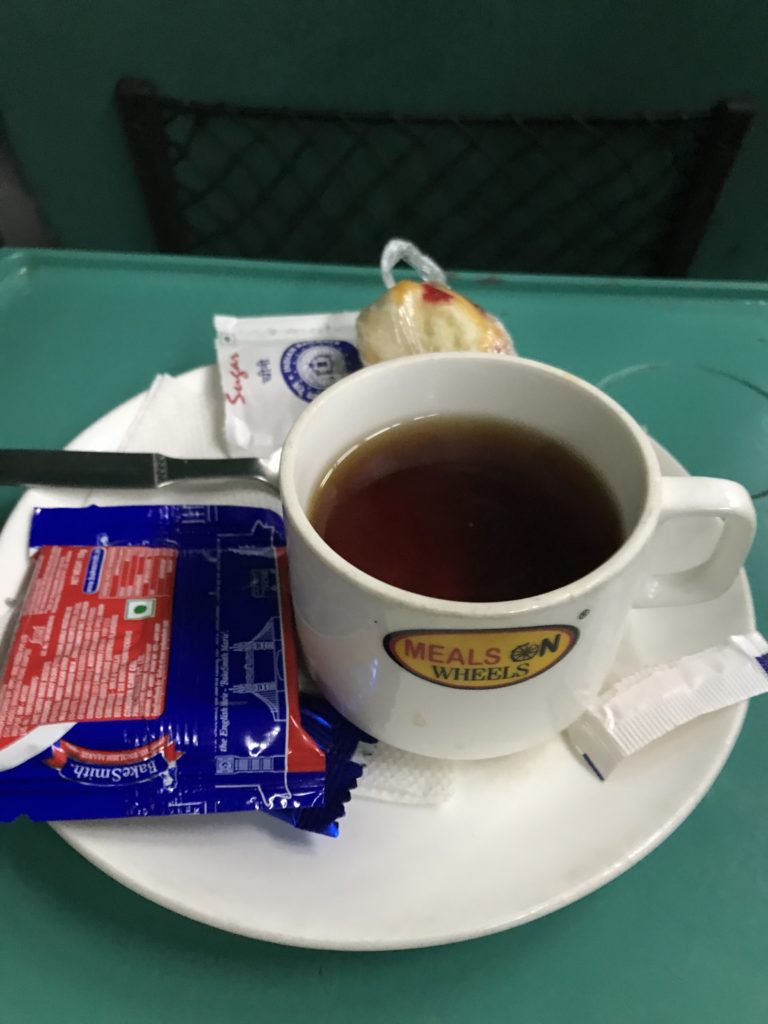
Issues and troubleshooting while booking.
Recently, the Indian Railways website was renovated with a much more friendly user facade. In fact, it is much simpler to use for a tourist compared to just one year ago. I personally did not have any problems while booking my tickets and verifying my details. However, there might be some issues due to their system that you can face at the time of booking. These are generally not receiving the OTP password to verify your number/email.
Problems are due to their system, so the only solution is continue to try until you get it (concerning your email, you may try to verify different emails and edit later your details from your account). Another error you might face is the “login error”. Despite typing the correct credentials, the system does not recognise them. Once again, persevere! It is their fault not yours, so after two-three attempts you should login successfully! If you have issue during your credit card transaction, this might be your bank that does not approve a foreign transaction. You can verify this by calling their call centre.
Bookings via Makemytrip and Cleartrip
Many users prefer to book their tickets throughout Makemytrip and Cleartrip. I personally preferred to book directly with Indian Railways as I don’t like much to proceed with third companies when I have a direct option. Furthermore, even if you want to book with these two companies you MUST register your ID details with Indian Railways anyway (Makemytrip will ask these before booking the tickets) so, to me there is no point in doing all the hard job and switch site when it comes to the easiest part! If you still want to book with these companies, you have first to register and verify an account with IRCT (see Step 1 below), second you have to create a second account with their company and only at the end you can proceed with the booking on their page.
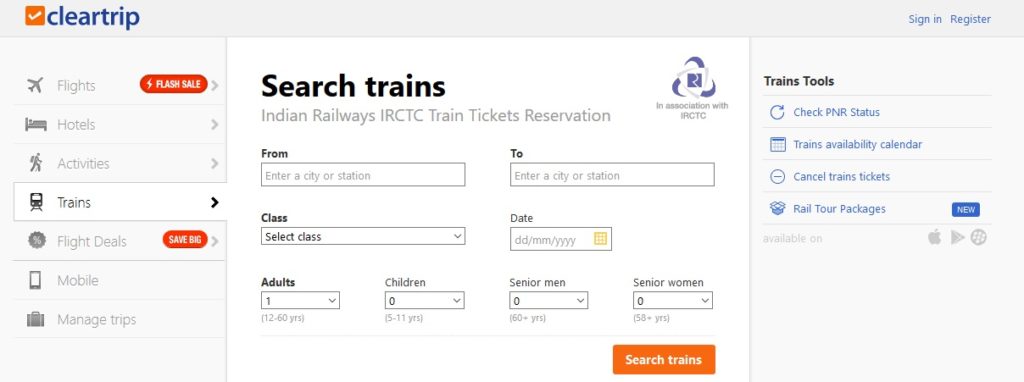
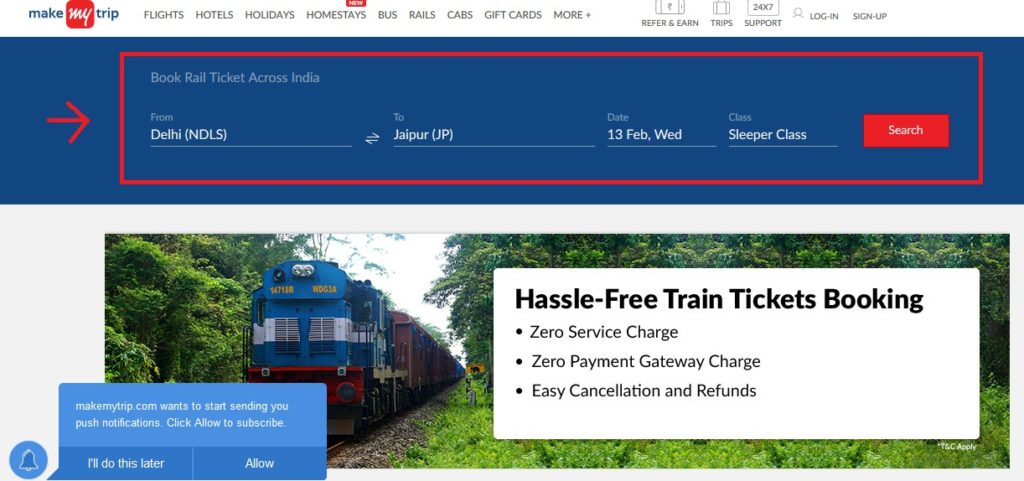
Pro: both websites looks much more tourist-friendly and simple to use after the registration. You can book also other types of transportation, including taxis.
Cons: first, you have to register with IRCT anyway so it is much more straightforward to book with them. Second, when I tried to use makemytrip last year it did not allow me to book without an Indian phone number, so after a couple of trials I gave up! Furthermore, it looks like they don’t accept foreign credit cards, although I couldn’t verify this personally and things change very quickly. Third, Cleartrip charges additional booking fees you will not find on IRCT. These are usually $0,50 in addition to the ticket price plus a 1.8% credit card fee.
Watch out! Scams at the train stations (and how to avoid them).
India is, unfortunately, famous also for the great number of scams you may encounter while on the road. Stations (especially big ones) are particularly sensitive to frauds and it would be really sad if your well-planned trip, possibly the trip you are dreaming for an entire life, ends up badly because of a scam. We almost got scammed at the New Delhi station and believe me, is not something I wish to anyone. There are various type of scammers at the station. However, the most popular is the fake police man/army man, which is the one I personally encountered.
Before my trip, I read so much about possible scammers, the way they acted and where to find them. I felt smart and well prepared, but reality is another thing. Especially if you travel at early morning/late night when you are not at the top of your faculties and a bit sleepy. This was my experience. Little parenthesis, Indians are obsessed with security. You’ll pass security checks in “airport style” everywhere, even to enter shops at the mall. Stations are, of course, no exception. Closed parenthesis.
The “your train is cancelled” scam
It was around 5.15 in the morning and our train to Agra was at six (it was still very dark outside). We reached the station well in time taking in consideration also that we did not know where to go or what to do precisely. After having spotted the security checks in one corner outside of the main gate, we knew we were on the right entrance.
We approached the security line. When it was our turn to pass the metal detector and scan the baggage, the guy looking like a police officer (who was sitting next to the bag scanner) with an evident badge attached on his jacket, asked for our tickets and passports.
It doesn’t sound too strange to me as he looked like part of the security team and he was wearing a uniform with a badge. However, I had anyway a red flag alert on in my mind and I gave him just the train tickets (of which I had a copy) trying to take time to “find” the passports. He did not wait too much time after receiving the tickets to state that our train was cancelled that morning and we couldn’t get inside the station because of this reason. Here was the moment I immediately knew he was a scammer!
He did not want to return us our tickets so we started discussing very loudly in front of the security line and I threatened him to call the police in that exact moment. I still don’t remember how, but I was able to take my tickets off his hands and he was still persistently continuing to say that our train was not departing that morning saying “go inside and you’ll see”. We genuinely sent him to hell and continued to the security without problem. Of course, our train was there as expected.
Things that surprised me a lot about this event were: first, the actual security people were watching the scene and did nothing despite knowing exactly what was happening. Second, people (including other French tourists who departed with us from the same hotel) did nothing despite hearing what was happening and possibly (if true) involving them as well. Thanks guys, so nice from you.
How we got out of the scam
Third, no actual police officers were around in or outside the station at that time! So, be extremely careful and take your guard high ALL THE TIME. Never give someone (despite officially looking) your passport or tickets. I had a copy of the tickets for this reason. Don’t trust anyone stating your train is burned, delayed, cancelled or anything else (same thing about hotels! Don’t trust anyone saying your hotel is closed etc.). Moreover, save the police number and your embassy number (just for the very bad cases). We got misled by the guy’s uniform and his position in the security line! In the end, we were lucky. However, I was also sure that our train wasn’t cancelled because I checked on the website before going! Trains are cancelled only in case of technical faults or bad weather conditions (e.g. flooding or heavy fog).
Other types of scams
What happened to us is not the only fraud you might face at the station. Watch out also for the fake ticket office and officer (inside the station) and for taxi drivers bringing you purposely to wrong stations/ fake ticket offices in order to force you going by car (with them or some of their friends) to your destination. If you travel at early morning, I warmly recommend making your hotel arranging a taxi for you and don’t go venturing with the first cab you find! Uber is generally safe in India but if you have trouble booking with them because of the network/ data etc. trust your hotel.
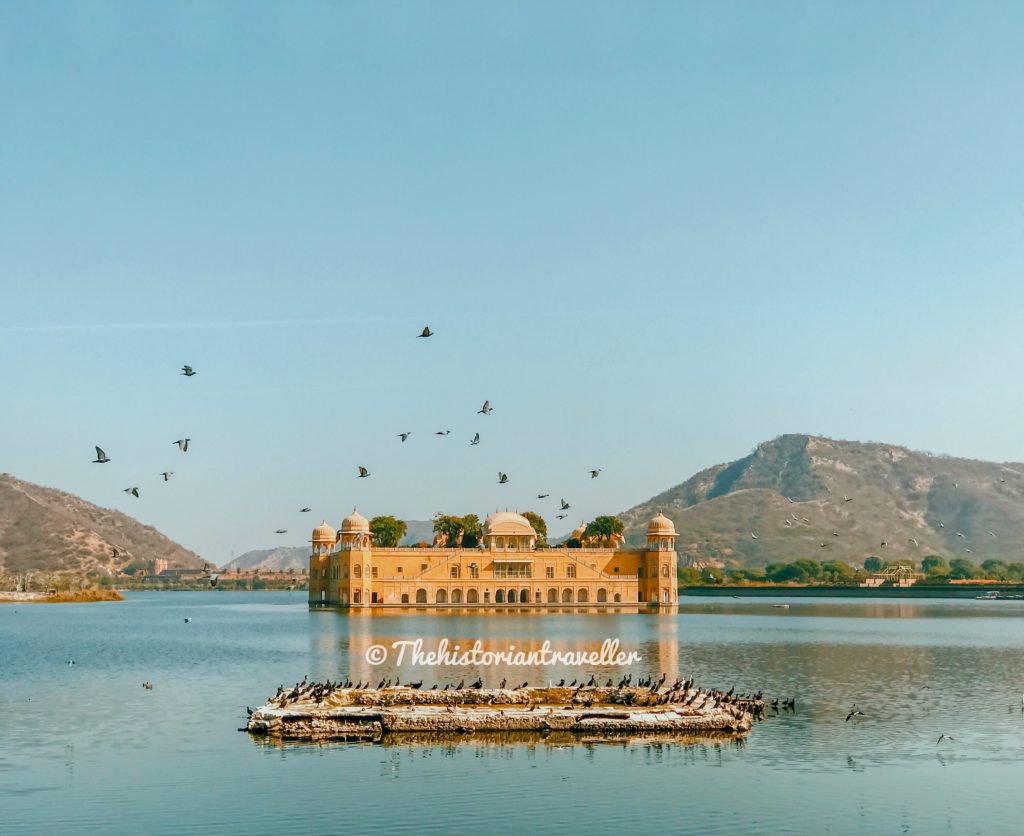
Conclusions
And that’s a wrap! If you have read till here and finished this Indian railways guide step by step, first, THANK YOU! Second, it means that you are very determined in getting these train tickets!! So don’t give up and you’ll manage that! I’ll try to keep this page as updated as possible. If there is any big change, you will find it here! For the moment all the info are updated to 24/01/19.
Cheers! Laura
Liked this blog? Pin it for later!
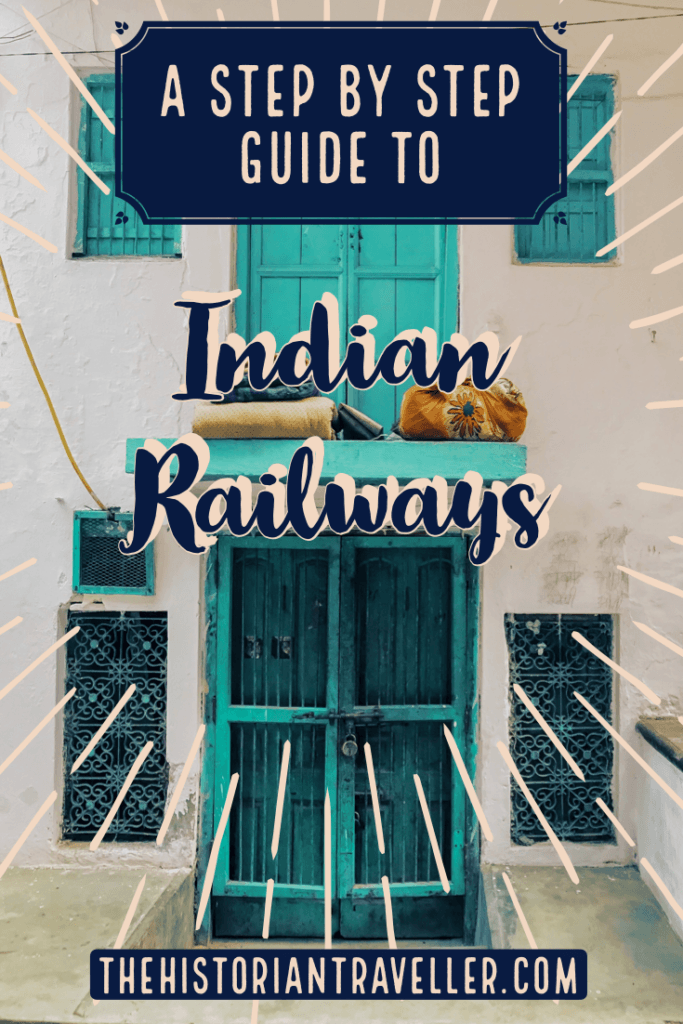
Interested in India? Read my Jaipur guide here